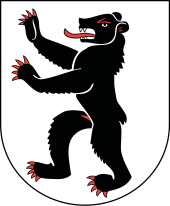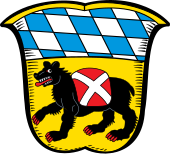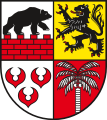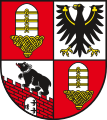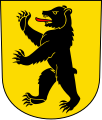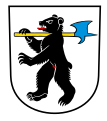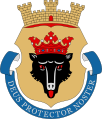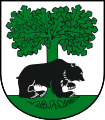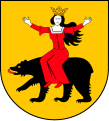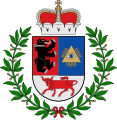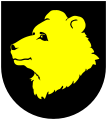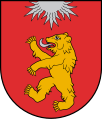The House of Ascania was a dynasty of German rulers. It is also known as the House of Anhalt, which refers to its longest-held possession, Anhalt.

Russia is divided into twelve economic regions —groups of federal subjects sharing the following characteristics:
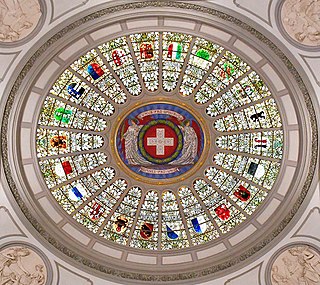
Each of the 26 modern cantons of Switzerland has an official flag and a coat of arms. The history of development of these designs spans the 13th to the 20th centuries.

The coat of arms of Finland is a crowned lion on a red field, the right foreleg replaced with an armoured human arm brandishing a sword, trampling on a sabre with the hindpaws. The coat of arms was originally created around the year 1580.

.ru is the Latin alphabet Internet country code top-level domain (ccTLD) for Russia introduced on 7 April 1994. The Russian alphabet internationalized country code is .рф.

The coat of arms of Russia derives from the earlier coat of arms of the Russian Empire. Though modified more than once since the reign of Ivan III (1462–1505), the current coat of arms is directly derived from its medieval original, with the double-headed eagle having Byzantine and earlier antecedents. The general tincture corresponds to the fifteenth-century standard.

This gallery of flags of federal subjects of Russia shows the flags of the 89 federal subjects of Russia including 2 regions that, while being de facto under complete Russian control, are not internationally recognized as part of Russia, and 4 regions that, while not being fully controlled by Russia or recognised internationally, are claimed by it as its federal subjects.
Solnechny, Solnechnaya, or Solnechnoye is the name of several inhabited localities in Russia:
Sosnovka is the name of several inhabited localities in Russia.

A crown is often an emblem of a sovereign state, usually a monarchy, but also used by some republics.
The national symbols of Lithuania are used in Lithuania and abroad to represent the country and its people, history, culture, and nature. These symbols are seen in official capacities, such as flags, coats of arms, postage stamps, and currency, and in URLs. They appear less formally as recurring themes in literature, art and folk art, heraldry, monuments, clothing, personal decoration, and as the names of parks, bridges, streets, and clubs. The less formal manifestations may be classified as national emblems.
Krasnaya Gorka is a noun phrase that refers to:
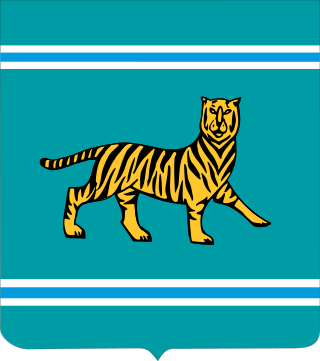
The coat of arms of the Jewish Autonomous Oblast is the official coat of arms of the Jewish Autonomous Oblast in Russia. The coat of arms consists of an Amur tiger standing on four legs with the tail and the head turned upwards, of which the latter is facing the observer. This specific position and occurrence of the Amur tiger in the coat of arms symbolizes the history and development of the Oblast. The coat is a heraldic French shield and the background represents the color of the geographical characteristics of the Russian Far East; which includes taigas, hills, and meadows.

The Russian Bear is a widespread symbol for Russia, used in cartoons, articles and dramatic plays since as early as the 16th century, and relating alike to the Russian Empire, the Russian Provisional Government and Russian Republic, the Soviet Union, and the present-day Russian Federation.
This list summarises the country subdivisions which have a separate article on their politics. Countries where significant powers delegated to federal units or to devolved governments and where the political system is multi-party democracy are more likely to have articles on the politics of their subdivisions.

Russia, the largest country in the world, has international land borders with 14 sovereign states as well as 2 narrow maritime boundaries with the United States and Japan. There are also two breakaway states bordering Russia, namely Abkhazia and South Ossetia. The country has an internationally recognized land border running 22,407 kilometres (13,923 mi) in total, and has the second-longest land border of any country in the world, after China. The borders of the Russian Federation were mostly drawn since 1956, and have remained the same after the dissolution of the Soviet Union. In 2014, Russia annexed Ukraine's Crimean peninsula in a move that remains internationally unrecognized.

German heraldry is the tradition and style of heraldic achievements in Germany and the Holy Roman Empire, including national and civic arms, noble and burgher arms, ecclesiastical heraldry, heraldic displays and heraldic descriptions. German heraldic style is one of the four major broad traditions within European heraldry and stands in contrast to Gallo-British, Latin and Eastern heraldry, and strongly influenced the styles and customs of heraldry in the Nordic countries, which developed comparatively late. Together, German and Nordic heraldry are often referred to as German-Nordic heraldry.
Podgorny, Podgornaya, or Podgornoye is the name of several rural localities in Russia.
Molodyozhny, Molodyozhnaya, or Molodyozhnoye is the name of several inhabited localities in Russia.


